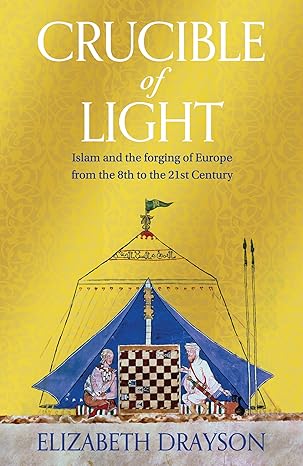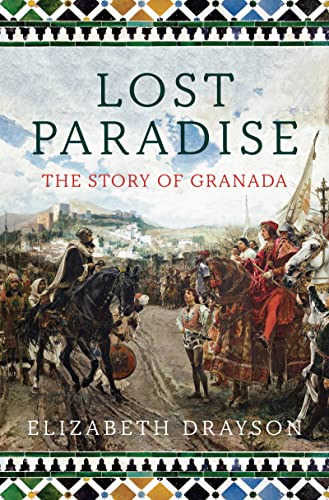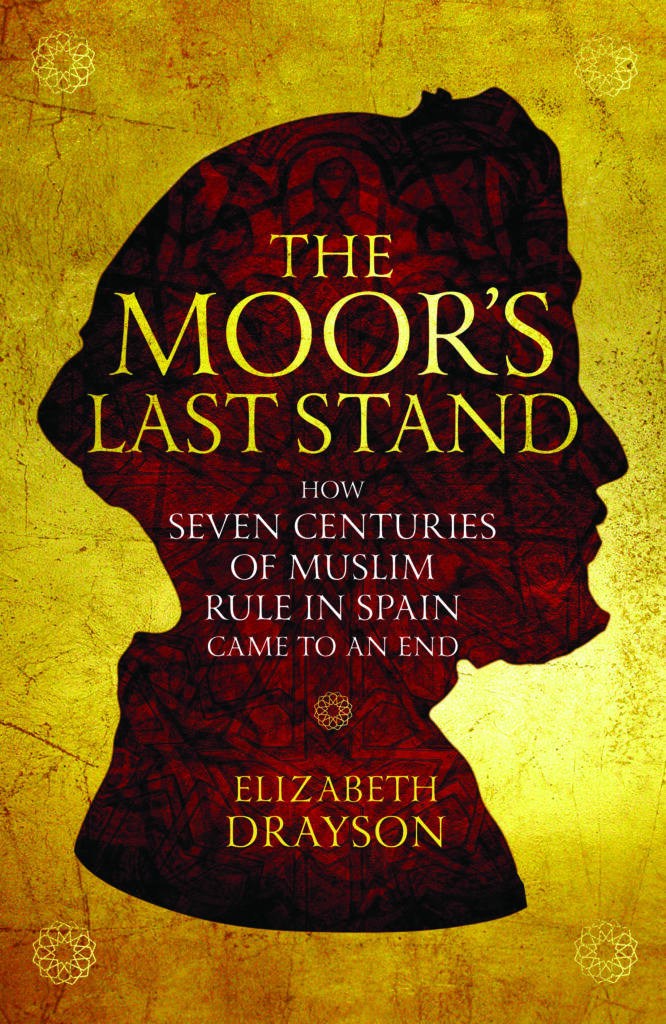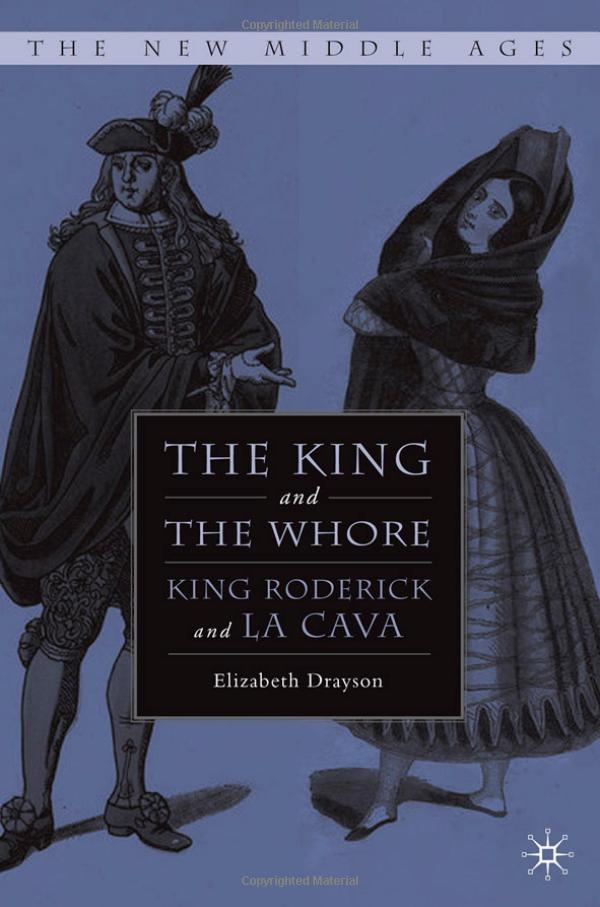My art and writing inform each other and share a similar aim. Overturning conventional perspectives and seeking out the ambiguous identity of both Spain and Europe through their history are at the heart of both my painting and my recent books. My research and writing have often focused on the middle ages, Spain’s most important historical era in my view, largely because Spain has the most significant, long-lasting and influential Islamic history in Europe, more so than the history of the Ottoman empire on this continent. I’ve sought to reveal that alternative history, which was intentionally suppressed in Spain itself until the end of the dictatorship, and where it’s still the source of great political and intellectual contention.
Books

Crucible of Light
Rethinking the history of the last thirteen centuries, in Crucible of Light, Elizabeth Drayson pulls together the epic interwoven history of the Muslim and Christian worlds.
Focusing on major turning points, individual stories and key places, from Mecca to Cordoba, from Damascus to Venice, and from Vienna to Istnbul, Drayson tracks the themes that unite us – classical learning preserved in Islamic libraries, the enduring influence of Moorish architecture and design, the food we share, the goods we have traded and the continuing dialogue between individuals and cultures that has permeated Europe’s history and shaped its borders.
Forthcoming, September 2025.
Lost Paradise: the story of Granada
The vital importance of Granada as the last bastion of Islamic rule in western Europe but also as a city with a multicultural, multi-racial history, led to my most recent book, Lost Paradise: the story of Granada, which charts that history from prehistoric times to the present, uncovering Granada’s many-layered past and exploring its evolving identity as a place with potential to be reimagined as a model of cultural hybridity and continuity that might transcend current political and religious fragmentation in Spain and in Europe and bring their diverse races and creeds together. It’s perhaps no surprise that six personages from its history also take visual form in the Andalusian Pageant.
The Moor’s Last Stand: How Seven Centuries of Muslim Rule in Spain Came to an End
In The Moor’s Last Stand, my aim was to tell the story of the end of Muslim Spain from the point of view of the last Moorish sultan of Spain, Muhammad XI, known as Boabdil, emir of the Nasrid dynasty of rulers that began with the reign of sultan Muhammad I in 1237. A man demonized by and even erased from history, I portray Granada’s final emir in the opposite way, as an unconventional hero for today, a man who chose diplomacy and negotiation over bloodshed, yet could not untie the shackles of his destiny. His surrender of his city to the Catholic monarchs King Ferdinand and Queen Isabella ended seven hundred years of Islamic rule in Spain
The Lead Books of Granada
Granada had cast a spell on me back when I visited it as a graduate, and I had written a book telling the tale of the mysterious Lead Books discovered there, and their connection with the plight of the Spanish Moriscos, who were Muslim converts to Catholicism, and had been banished from Spain starting in 1609.
The King and the Whore: King Roderick and La Cava
King Roderick of the Visigoths’ fateful passion for the beautiful La Cava was blamed for the disastrous loss of Spain and Portugal to the armies of Tarik ibn Ziyad, who led the eighth-century Muslim conquest of Spain and after whom Gibraltar is named. When King Roderick’s armies were defeated by Tarik’s Muslim troops at the battle of Guadalete not far from Cordoba in July 711, what are now Spain and Portugal came under Islamic rule as the Muslim territory of al-Andalus.






